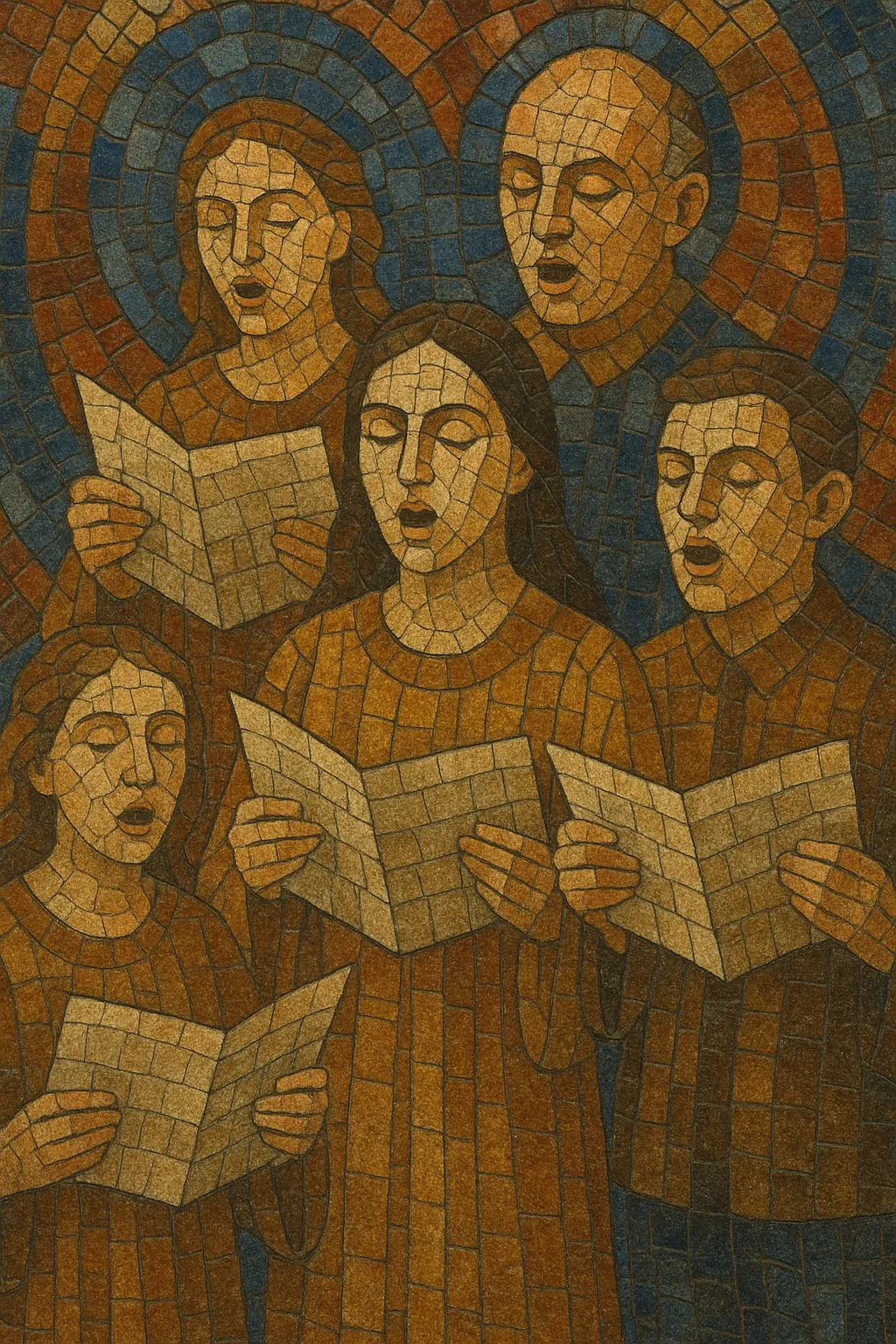Choral refers to music written for and performed by a choir—an ensemble of voices organized into sections such as soprano, alto, tenor, and bass (SATB), or same-voice groupings (SSA, TTBB). It encompasses both sacred and secular repertoire and may be sung a cappella or with accompaniment by organ, piano, or full orchestra.
Stylistically, choral music ranges from chant-like monophony to intricate polyphony and rich homophonic textures. Texts are drawn from liturgy, scripture, poetry, and vernacular sources, and are set in many languages. Performance contexts include church services, concert halls, and community events, making choral one of the most socially embedded and widely practiced forms of ensemble music.
Across history, choral music has served as a laboratory for vocal counterpoint, word painting, and text-driven form, while functioning as a cultural bridge among religious rites, national traditions, and contemporary concert practice.
Choral practice in the Western tradition coalesced in the early Christian era (4th century) when congregational and clerical singing became a core element of worship. This early music was primarily monophonic chant, codified in regional rites such as Old Roman, Ambrosian, Gallican, and later standardized as Gregorian chant.
From the 9th century onward, chant-inspired organum and the rise of notated polyphony birthed distinctly choral idioms. By the 13th–16th centuries, motets, masses, and anthems flourished, culminating in the transparent yet expressive counterpoint of composers like Palestrina, Tallis, and Byrd. Cathedral and chapel choirs institutionalized vocal training and ensemble balance that remain foundational today.
The Baroque era expanded choral forces with dramatic contrasts and continuo-led harmony. J.S. Bach’s cantatas and passions and Handel’s oratorios positioned the chorus as a narrative and theological engine. In the Classical period, Haydn and Mozart refined choral clarity and form in masses and oratorios, aligning vocal writing with symphonic logic.
The 19th century elevated the chorus to symphonic grandeur. Brahms (A German Requiem), Verdi (Messa da Requiem), and Bruckner (motets and masses) combined contrapuntal craft with orchestral color, exploring deeper emotional registers and larger forces.
Modernists and neo-traditionalists reimagined choral sound: Stravinsky (Symphony of Psalms), Orff (Carmina Burana), Britten (War Requiem), Ligeti (cluster textures), and Penderecki (avant-garde sonorities). Minimalist and post-tonal languages coexist with tonal and modal idioms in the work of Arvo Pärt, John Rutter, and Eric Whitacre. Globally, Anglican, Orthodox, and gospel traditions enriched the palette, while community and youth choirs catalyzed a broad-based choral renaissance.


